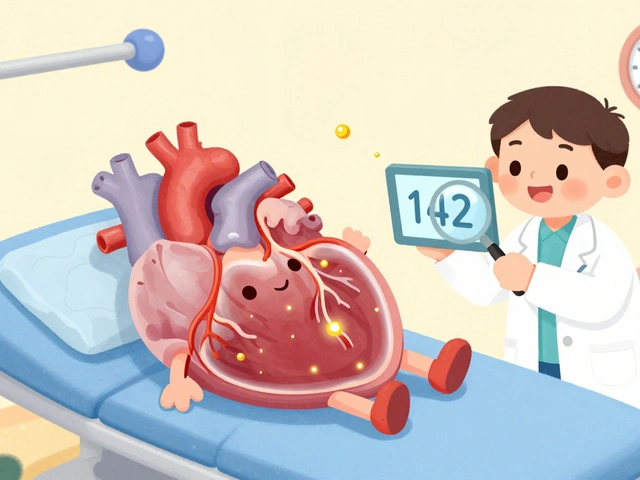Food allergy is an immune system reaction that occurs when the body mistakenly identifies a harmless food protein as a threat. For millions of people, even a tiny bite can spark itching, swelling, or a life‑threatening anaphylactic shock. This guide breaks down the most frequent offenders and offers a step‑by‑step plan to keep meals enjoyable and safe.
What Happens Inside the Body?
When a susceptible individual eats an allergen, specialized IgE antibody a protein that flags foreign substances for the immune system binds to the food protein. This triggers mast cells to release histamine and other chemicals, leading to the classic allergy symptoms: hives, stomach cramps, breathing difficulty, and in severe cases, a rapid drop in blood pressure.
The Most Common Culprits
Although any food can cause an allergic response, eight foods account for over 90% of reported reactions in the United Kingdom and Europe.
- Peanut is a legume that triggers IgE‑mediated reactions in about 2% of adults worldwide. Even trace amounts can provoke severe symptoms, making it a top priority for avoidance.
- Tree nuts such as almonds, walnuts, and hazelnuts, affect roughly 1% of the population and often coexist with peanut sensitivity.
- Shellfish including shrimp, crab, and lobster, are the leading seafood allergen, responsible for 0.5‑1% of adult allergies.
- Milk a dairy protein that remains the most common allergen in children, affecting up to 2‑3% of infants.
- Egg both white and yolk proteins can trigger reactions, especially in young children, with a prevalence of about 1% in early childhood.
- Soy a legume common in processed foods, responsible for roughly 0.3% of adult food allergies.
- Wheat contains gluten proteins that can cause IgE‑mediated reactions in about 0.4% of the population, distinct from celiac disease.
- Sesame has surged in prevalence, now affecting close to 0.2‑0.3% of adults and is increasingly regulated in EU food labeling.
Spotting Hidden Sources
Allergens love to hide where you least expect them. Processed snacks, sauces, and even cosmetics can contain trace amounts. Key tactics include:
- Read the label carefully. Look for the EU‑mandated allergen statement, which lists 14 allergens in bold type. Remember that "contains" and "may contain" both signal risk.
- Watch for alternative names. Peanut may appear as "groundnut," "arachis oil," or "legume protein." Soy shows up as "hydrolyzed soy protein" or "soy lecithin."
- Check for cross‑contamination warnings. Phrases like "produced in a facility that also processes peanuts" indicate possible trace exposure.
- Ask about preparation methods. Restaurants often use the same frying oil for multiple dishes, which can transfer allergens.
Practical Strategies to Avoid Reactions
Staying safe is a mix of habit, preparation, and quick thinking.
- Build a personal allergy inventory. Keep a list of confirmed allergens, common hidden sources, and your reaction severity. Carry it in your phone and on a printed card when traveling.
- Separate cookware at home. Designate a cutting board, utensils, and a storage bin for allergen‑free foods. Clean surfaces with a bleach‑based solution to break down protein residues.
- Use a dedicated pantry space. Store safe foods on a high shelf away from potential cross‑contact items like nuts or wheat flour.
- Plan ahead for dining out. Call the venue ahead of time, ask to speak with the chef, and request that your meal be prepared in a clean station.
- Carry emergency medication. A prescribed epinephrine auto‑injector a life‑saving device that delivers a rapid dose of adrenaline should be on hand at all times. Know how to use it and have a replacement ready.
- Train friends and family. Teach them the signs of anaphylaxis and the steps for administering epinephrine, then call emergency services.

Comparison of Top Allergens
| Allergen | Prevalence (% of population) | Typical Symptoms | Common Hidden Sources |
|---|---|---|---|
| Peanut | 2.0 | Hives, swelling, anaphylaxis | Satay sauce, baked goods, granola bars |
| Tree nuts | 1.0 | Itching, throat tightness, GI upset | pesto, chocolate, ice cream |
| Shellfish | 0.8 | Swelling, wheezing, dizziness | Stocks, sauces, sushi rolls |
| Milk | 2.5 (children) | Eczema, vomiting, respiratory distress | Cheese, butter, processed meats |
| Egg | 1.0 (children) | Hives, abdominal pain, anaphylaxis | Mayonnaise, baked goods, pasta |
| Soy | 0.3 | Hives, itching, GI discomfort | Tofu, soy sauce, protein bars |
| Wheat (Gluten) | 0.4 | Swelling, wheezing, urticaria | Bread, cereals, soups |
| Sesame | 0.3 | Itching, swelling, anaphylaxis | Tahini, seed mixes, bakery items |
Related Concepts to Explore
Understanding food allergies opens doors to a wider health conversation. Topics that naturally follow include:
- Food intolerance a non‑immune reaction, such as lactose intolerance, that causes digestive upset but not anaphylaxis.
- Oral allergy syndrome a cross‑reaction between pollen allergens and certain raw fruits or vegetables.
- Anaphylaxis a rapid, systemic allergic reaction that requires immediate epinephrine administration.
- Allergen immunotherapy a treatment that gradually desensitizes the immune system through controlled exposure.
- EU food labeling regulations legal requirements mandating clear allergen statements on pre‑packed foods across Europe.
Next Steps for a Safer Kitchen
Take action today:
- Print your allergy inventory and keep it on the fridge.
- Audit your pantry for hidden allergens and reorganize.
- Schedule a refresher with your GP about epinephrine prescription.
- Teach your children or housemates the emergency plan.
Frequently Asked Questions
How can I tell if a product contains a hidden allergen?
Check the ingredient list for the 14 EU‑mandated allergens written in bold. Also read any "may contain" or "processed in a facility that handles" statements. If terminology is unclear, contact the manufacturer directly.
Is a food intolerance the same as a food allergy?
No. A food intolerance involves digestive enzymes or chemical reactions and does not trigger the immune system or cause anaphylaxis. Symptoms are usually limited to stomach upset, whereas allergies can affect the skin, respiratory tract, and cardiovascular system.
Can I outgrow a food allergy?
Some children outgrow allergies to milk, egg, or wheat, often by age five. Peanut, tree nut, and shellfish allergies are less likely to resolve, but regular medical review can track changes.
What should I do if I experience anaphylaxis?
Administer your epinephrine auto‑injector immediately, call emergency services, and lie flat with legs raised if possible. Even if symptoms improve, a medical evaluation is mandatory.
Are there reliable alternatives to common allergens?
Yes. For example, almond milk substitutes soy milk, oat milk replaces dairy, and chickpea flour can stand in for wheat in many recipes. Always verify that the alternative itself is not an allergen for you.
How often should I replace my epinephrine auto‑injector?
Check the expiration date regularly; most devices are good for 12‑18 months. Replace it immediately after any use, even if the dose seems partial.
Can cooking destroy allergenic proteins?
Only a few allergens, like some fruit enzymes, are heat‑sensitive. Most major allergens-peanut, tree nuts, shellfish, milk, egg-remain potent after baking, frying, or boiling.






5 Comments
Been managing a peanut allergy since I was 5. The part about cross-contamination in restaurants? Spot on. Once got sick from a salad that was chopped on the same board as peanut butter sandwiches. Now I bring my own utensils everywhere. Even to family dinners. Worth the weird looks.
Also, sesame is sneaky. Thought it was just middle eastern food, but it's in everything now - bagels, granola bars, even some veggie burgers. EU labeling saved my life.
As someone who’s lived in three countries and eaten everything from street food in Bangkok to Michelin-starred kitchens in Paris, I can tell you this guide is one of the most practical things I’ve read on food allergies. Seriously, the section on hidden sources? Gold.
People think allergies are just ‘being picky’ - nah. It’s not about preference, it’s about survival. I’ve seen friends go into anaphylaxis because someone thought ‘a little bit won’t hurt.’ Spoiler: it does. Always.
And yes, epinephrine isn’t optional. It’s your seatbelt. You don’t wear it because you expect to crash - you wear it because you know crashes happen. Period.
Also, shoutout to the EU for labeling regulations. The US is still playing catch-up. If you’re traveling, always carry your own snacks. No exceptions. Not even for ‘just this one time.’
Thank you for writing this with such care. I have a 6-year-old with multiple allergies and this feels like the kind of resource I wish I’d had two years ago. The advice about separating cookware and using bleach to clean surfaces? My kitchen was a disaster before I read this. Now it’s organized, safe, and honestly - less stressful.
I also appreciate that you didn’t just list the allergens but explained how they behave differently in food. That helped me understand why my kid reacts to baked egg but not scrambled. Knowledge reduces fear.
And yes, training family members is non-negotiable. My sister still thinks ‘a little dip’ is fine. I’m working on her. Slowly.
Look I get the fear but honestly most of these 'allergies' are just overdiagnosed hypochondria wrapped in marketing
My cousin had a 'soy allergy' and then went vegan and realized she just didn't like tofu
Also why are we treating sesame like it's radioactive? It's a seed
And don't get me started on 'may contain' labels - that's just corporate liability nonsense
People need to chill and eat real food not fear-based processed nonsense
Also epinephrine is for emergencies not for people who are too lazy to read labels
Just saying
I really appreciate how this guide doesn’t just scare people but gives actionable steps - especially the part about building a personal allergy inventory. I started doing that after my son had his first reaction, and it made me feel less powerless.
One thing I’d add - don’t underestimate the emotional toll. It’s not just the physical reactions. It’s the loneliness of eating differently, the guilt of saying no to shared meals, the constant vigilance. It’s exhausting.
But also - there’s community. Online forums, local support groups, even just texting another parent who gets it. You’re not alone. And yes, your kid can still have birthday cake - just make it safe. I’ve got a gluten-free, dairy-free, nut-free vanilla cake recipe that’s actually better than the original.
And Guy - I know you think it’s overblown. But if you’ve never had to watch your child turn blue because of a crumb, maybe just hold space for those who have.
Thanks for this. Really.
Also - sesame in tahini? Yeah. I didn’t know it was that common until my daughter reacted to hummus. Now I check every jar like it’s a bomb.